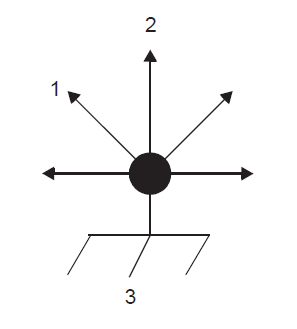Grounding Considerations
The system obtains an earth reference ground through the power cords attached to the system. Similarly, each peripheral device connected to the system obtains ground through its power cord. You must ensure that a high-integrity safety-ground conductor is installed as part of the wiring system (in accordance with U.S. national electric code NFPA 70 or the equivalent). The international safety standard (EN62368) for audio/video, information, and communication technology equipment also requires a ground conductor, but calls it a protective earth (PE) ground.
Depending on local conditions, ground potentials may differ between the system base and any peripheral devices connected to the system base. All grounds in the system must return to the same reference point in the power distribution system, as close as possible to zero (0) volt potential relative to earth reference ground. Earth reference ground is typically a metal stake in the ground to which the ground conductors from one or more buildings are attached.
As shown in Figure 48, a star ground is often used to obtain the same earth reference ground. Each earth reference ground, such as the system base ground, is returned separately to a common point where a zero-volt (0V) earth ground exists. The star ground ensures that all equipment is at the same potential and that no noise or safety problems associated with an unpredictable or uncharacterized grounding system will occur.
Figure 48: Star Ground Example

| 1 |
To monitor |
| 2 |
To ztC Endurance system |
| 3 | Earth reference ground (0V) |